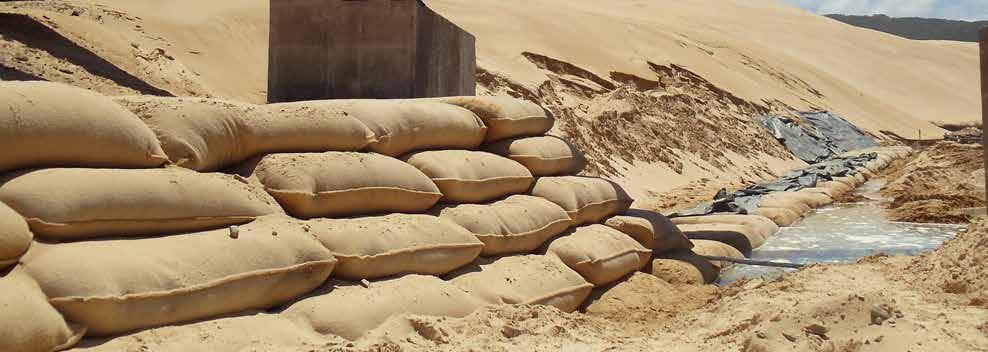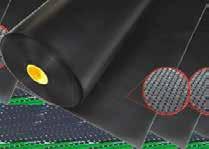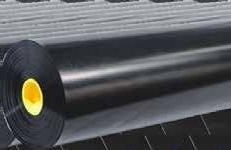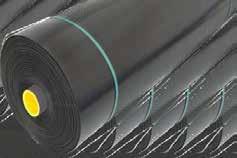
6 minute read
GEOSYNTHETICS
by 3S Media
Example of geotextile drainage systems
The vital role of GEOSYNTHETICS GEOSYNTHETICS
Advertisement
Geosynthetic materials are employed in many engineered applications. ReSource speaks to Charl Cilliers, president of GIGSA (Geosynthetics Interest Group of South Africa), about their evolving role in landfills and the broader built environment, as well as the importance of retaining trained specialists to achieve fit-for-purpose results.
What types of geosynthetics are available for use in landfill applications?
CC There are numerous applications, of which the key ones are listed below: • Barriers: examples are geomembranes and geosynthetic clay layers for barriers and covers. • Reinforcement: using geogrids for basal reinforcement or stabilisation of covers on steep slopes. Geogrids can also be used in mechanically stabilised embankments where space does not allow for gentle slopes. • Filtration and drainage: these include leakage detection systems between barrier layers, gas drainage in capping systems, and leachate collection systems above barriers. The typical geosynthetics here are drainage cores and geotextiles. • Protection: thicker geotextiles are placed above and below geomembranes to prevent puncture and long-term strain. • Erosion control: this includes landfill covers, surface water management, and silt fences around stockpiles. These structures typically employ geotextiles, geocells and hessian mats.
What are some of the technical and economic advantages of using geosynthetic versus traditional clay liners?
Geomembranes in combination with clay layers provide enhanced performance over clay layers when used alone. They ensure intimate contact between the two barriers, causing leakage to be limited to areas around damage in the geomembrane. Geosynthetic clay liners are also easier and faster to install than traditional clay layers when used in the appropriate application. Further points to note include: • Circumstances where suitable clay is not available may result in geosynthetics providing an alternative that could be faster to install and perform better. This will, of course, depend on the site and characteristics of the waste being stored. • There may be a potential cost saving (depending on application). • Furthermore, adequate design is required for the appropriate use of geosynthetics when used to replace or enhance traditional clay layer barriers.
Has there been a significant uptake in the use of geosynthetics in landfills?
Due to the advantages of geosynthetics, there has been an increase in their use since they provide cost-effective alternatives to barrier and drainage requirements. Additionally, geosynthetics provide similar or better performance, which is – in some instances – easier to achieve compared to conventional civil construction techniques.
However, I must stress that the appropriate use of geosynthetics is essential. For instance, it’s easy to overspecify geosynthetics in a design, which may present unnecessary costs for the client.
What national standards guide the use of geosynthetics in landfill applications?
The National Norms and Standards (GNR 636 (23 August 2013): National Norms and Standards for Disposal of Waste to Landfill) prescribe the barrier systems required for various classes of landfill. In many of the classes, a geomembrane is prescribed. Geosynthetic alternatives for drainage layers and protection layers are also included. Each class prescribed may contain a certain type of waste, with more hazardous waste requiring higherspecification barrier systems.
The standards also prescribe the level of detail required in a design, which is submitted to the authorities for approval. Requirements include the submission of a construction quality assurance (CQA) plan.
Does South Africa encounter challenges with substandard geosynthetics?
Substandard materials are always available on the market. A challenge is that these are often offered as cheaper alternatives to higher-quality geosynthetics. This is typically managed through both the project specification and quality assurance on-site. The project specification sets the quality requirements for the geosynthetics required on a project by referencing the requirements stipulated by the SABS. The engineer’s duty is to ensure that the geosynthetics proposed meet the specification.
It is necessary to ensure that, once they arrive on-site, it is confirmed that the geosynthetics are the same as those stipulated at the tender stage. This can be verified by requesting manufacturing quality control records. In addition, independent conformance testing can be carried out on the geosynthetics when they arrive on-site. Lastly, the method of installation needs to meet the requirements of the project specification and approved method statements in the contractor’s quality control plan.
Organisations like GIGSA aim to educate the industry on how to carry out adequate designs, draft stringent project specifications and carry out good CQA.
Construction completion reports drafted at the end of projects are often required to be submitted to the authorities before a commissioning letter will be provided. If substandard materials are reflected in the report, or if CQA is not evident or poor, there may be consequences for the operations of the facility.
How important is correct installation?
Correct installation is vital. The industry is fraught with poor CQA. In some projects, millions are spent
on the procurement of the correct materials only to fail during the installation process, causing a collapse in performance.
This is largely due to undeveloped or substandard CQA procedures taking place, if at all. An example of how poor CQA can affect the performance of a landfill is evident in the application of landfill barriers, specifically the placement of drainage stone above a geomembrane.
The literature states that up to 80% of damage inflicted on a geomembrane takes place during the covering of the drainage layer or ballast layer above the geomembrane. Without good quality assurance, the damage of the geomembrane is likely to be much greater than if good quality assurance is in place. This results in exponentially more leakage through the barrier system in cases of poor or no quality assurance.
The authorities have issued a CQA plan template. This is useful in drafting a good CQA plan.
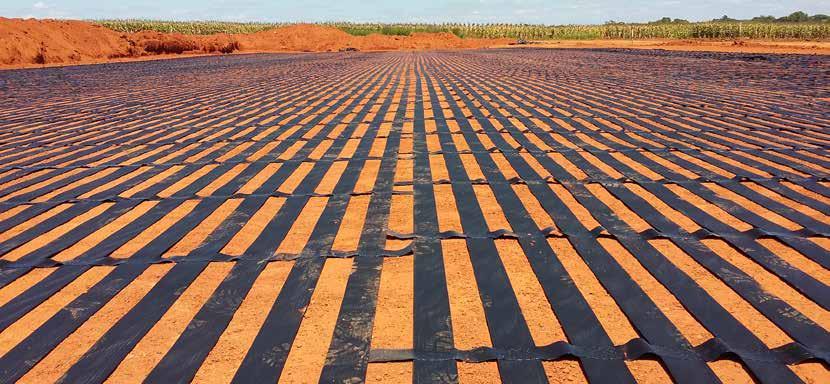
What are the benefits of becoming a GIGSA member?
The value of being a member of GIGSA cannot be overemphasised. Only through training and education can design engineers and construction quality control assurers become confident in the appropriate use and installation of geosynthetics. While there are many advantages of using geosynthetics, there is also a risk of inadequate or overspecified design, or a risk of substandard material arriving on-site and not being identified through rigorous quality assurance. GIGSA members are there to ensure optimum quality control and project execution.
About GIGSA
GIGSA was founded in 1994 by a group of suppliers, installers, consultants, a regulator and an academic at the Faculty of Engineering of the University of the Witwatersrand. Its founding coincided with the publication of the first edition of the Minimum Requirements Series by the then Department of Water Affairs and Forestry. The intention of the Minimum Requirements was to regulate waste management as a whole, but also waste disposal by landfill in South Africa, which made the use of geomembranes mandatory. This reinforced the need for an organisation like GIGSA, as geosynthetics were largely unknown construction materials at that time.
Committee and Task Forces
GIGSA was, furthermore, founded as the South African Chapter of the International Society of Geosynthetics (IGS). The IGS was established in 1984 with, in broad terms, the same objectives as GIGSA. The IGS became the first non-founding member of the Federation of Geo-Engineering Societies (FedIGS) in 2011.
Erosion protection A geogrid installation
The founding members of the FedIGS are the International Society of Soil Mechanics and Geotechnical Engineering, the International Society of Rock Mechanics, and the International Association for Engineering Geology and the Environment. The aim of the FedIGS is to facilitate collaboration and provide a means of structured and formal communication between the organisations.
Credit: GIGSA
Charl Cilliers, Pr Eng, president of the Geosynthetics Interest Group of South Africa
